India-Canada Relations
Context:
- The diplomatic situation between India and Canada remains tense, with both sides accusing the other of wrongdoing.
- Canada has alleged that India was involved in the murder of Hardeep Singh Nijjar, a Canadian citizen, in Vancouver earlier this year.
- Meanwhile, India has accused Canada of providing refuge to individuals it views as terrorists, further complicating relations between the two nations.
1.
What is the history of India-Canada relations?

- Canada and India have long standing bilateral relations built upon shared traditions of democracy, pluralism and strong interpersonal connections.
- In the early 19th century, Canada and India were part of the British Empire.
- The Indo-Canadian community was formed in the late 19th century due to the Indian emigration to Canada, majority of whom were Punjabis, which included veterans of the British Indian Army.
- India-Canada diplomatic relations were established in 1947 and developed well when Prime Minister Jawaharlal Nehru visited Canada in 1949.
- After Indian Independence in 1947, the relations between the countries were furthered with Canada keen to act as a bridge between India and the Western World.
- Canadian foreign aid to India started in 1951 and grew substantially under the Colombo Plan.
- Both are member nations of the Commonwealth of Nations and are part of G20, a group of world's largest economies.
- Also the Canadian Constitution heavily influenced the Indian Constitution, with many of the same principles adopted, including the idea of a federal system.
- Year 1974 saw the deterioration of India-Canada relations due to India’s Smiling Buddha nuclear test.
2.
What is the significance of India-Canada relations?

| Significance | Analysis |
|---|---|
| Bilateral relations |
 |
| Trade relations |
 |
| Education |
 |
| Development Cooperation |
|
| Defense cooperation |
|
| Civil Nuclear Cooperation |
 |
| Space Cooperation |
|
| COVID-19 vaccine collaboration |
|

3.
What is the timeline of tension in India-Canada relations?
- The diplomatic tensions between India and Canada started much before Nijjar’s killing.
- Here is a timeline of events leading up to the latest developments.
| Event | Analysis |
|---|---|
| February 2018: Controversy over Trudeau’s India dinner. |
|
| December 2020: Trudeau angers India with comments about farmers’ protests |
|
| June 2023: The killing of Hardeep Singh Nijjar |
|
| September 2023: Trade negotiations paused, G20 tensions |
|
| October 2023: Canada pulls 41 diplomats out of India |
|
| May 2024: Three men are arrested and charged with Nijjar’s death |
|
| October 2024: Canada expels six Indian diplomats |
|
4.
What is the role of the US in the India-Canada tussle?
- After Gurpatwant Singh Pannun, a Khalistani separatist, filed a civil lawsuit in US court alleging the Indian government of hatching a conspiracy to assassinate him, the District Court for the Southern District of New York issued a summons to the Indian government.
- Apart from the Indian government, the lawsuit names India's foreign intelligence agency personnel and others, including National Security Advisor Ajit Doval, former Research and Analysis Wing (R&AW) chief Samant Goel, R&AW agent Vikram Yadav, and Indian businessman Nikhil Gupta.
- The US Department of Justice charged Vikash Yadav with leading an unsuccessful plot to murder Khalistani terrorist Gurpatwant Singh Pannun last year.
- Gurpatwant Singh Pannun is one of the main leaders of the Khalistan movement, which advocates for a religion-based separate state to be split out from Punjab and many neighboring areas in India, to be known as Khalistan.
- He holds dual citizenship of the US and Canada.
- The US accuses Yadav of directing another Indian citizen, Nikhil Gupta, who it alleges paid a hitman $15,000, to kill Pannun.
- In November 2023, US federal prosecutors charged Nikhil Gupta of working with an Indian government employee in the foiled plot to kill Pannun in New York.
- The FBI put Viaks Yadav on its wanted list and said that a federal arrest warrant was issued for Yadav on October 10.
- India, while investigating the allegations made by the US , said Yadav was no longer a government employee, without saying whether he had been an intelligence officer.
- Records showed that Viaks Yadav spent four months in Delhi’s Tihar Jail before being granted bail in April,2024.
- Amid diplomatic standoff, India has informed Canada that Sandeep Singh Sidhu aka Sunny Toronto who works as a border police official in Canada is promoting terrorist activities in Punjab and added him to the list of fugitives sought for deportation.
- The National Investigation Agency (NIA) said he was the mastermind behind the assassination of Balwinder Singh Sandhu, a Shaurya Chakra awardee, in Tarn Taran district of Punjab in October 2020.
5.
What are the Challenges in India-Canada Relations?
- The recent deterioration of relations between India and Canada has drawn attention to a long-standing issue: mutual distrust stemming from the tragic 1985 Air India Kanishka bombing.
- The killing of Hardeep Singh Nijjar on Canadian soil has reignited accusations, with Canada alleging Indian government involvement while India claims Canada harbors Khalistani extremists.
| Challenges | Analysis |
|---|---|
| Diplomatic Immunity Issue |
|
| Khalistan Issue |
|
| Economic and Trade Barriers |
|
| Visa and Immigration Issues |
|
6.
What is the Khalistan movement?
- Khalistan is the name of the proposed state envisioned by some Sikhs, incorporating the Indian state of Punjab as well as other Punjabi-speaking areas of northern India to establish a Sikh nation.
- The ethno-religious liberation movement gained traction in the 1970s and early 80s in India.
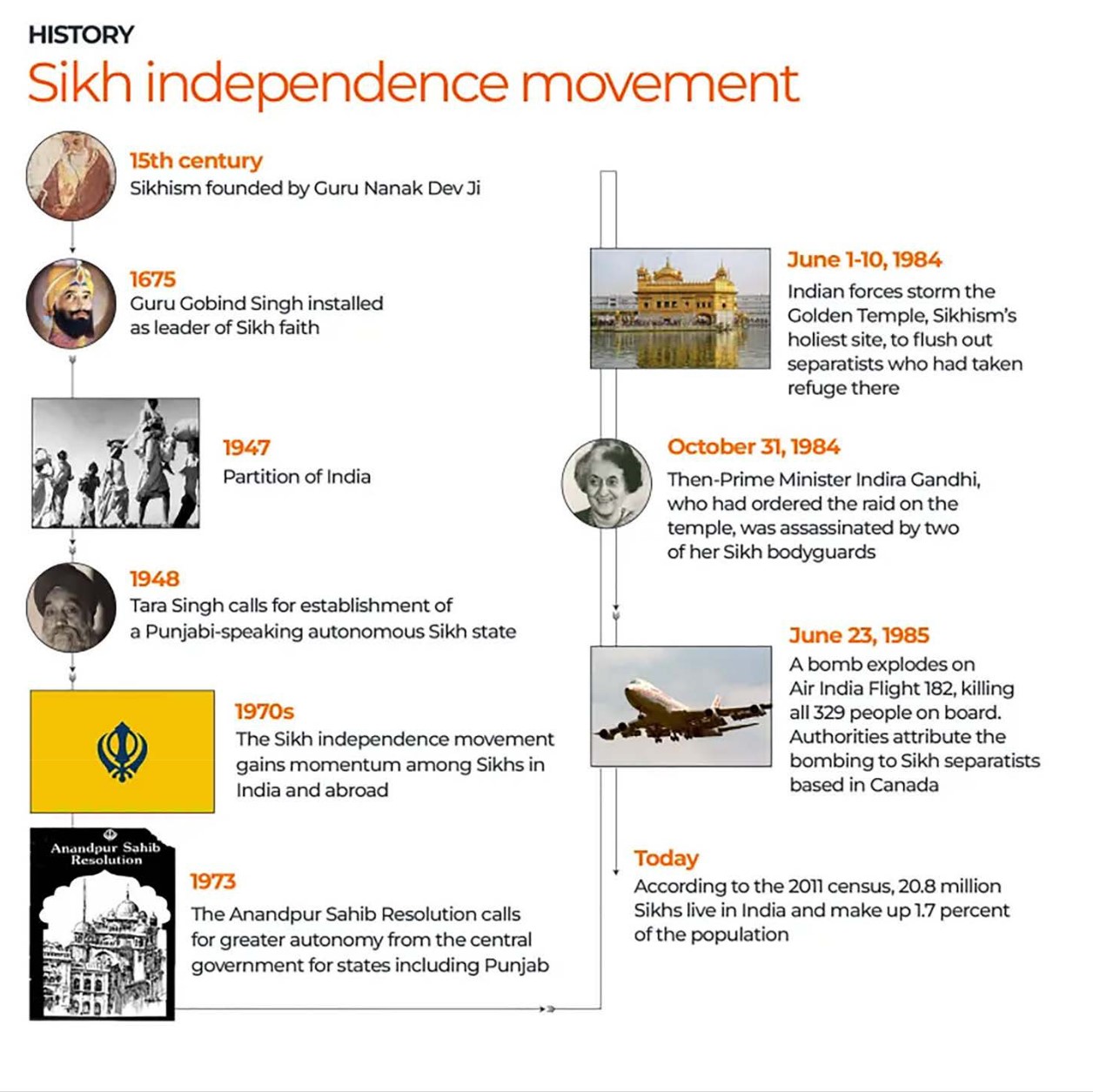
- There is division among supporters of Khalistan on the boundaries of a sovereign Sikh state, but most agree that it would encompass the state of Punjab in India.
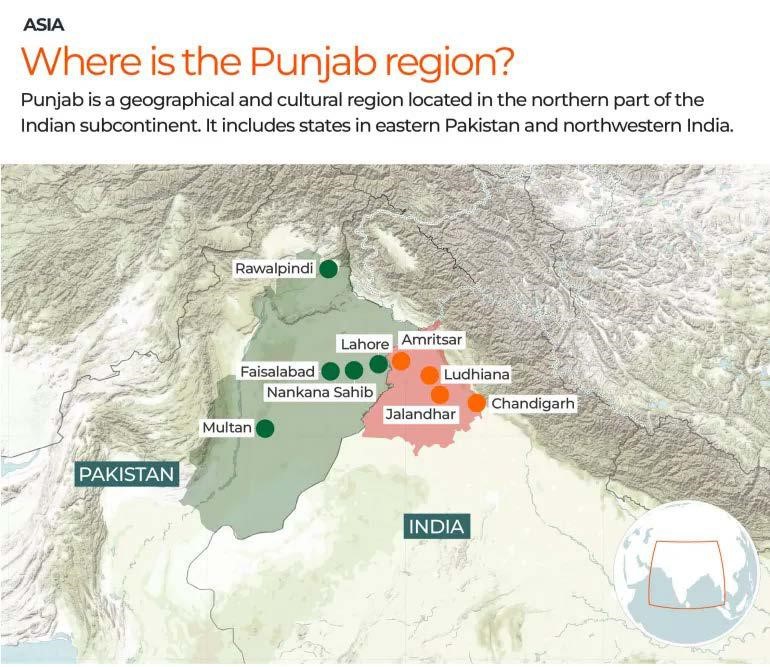
7.
Which prominent Khalistan activists have been killed recently?
| Khalistan activists | Analysis |
|---|---|
Hardeep Singh Nijjar
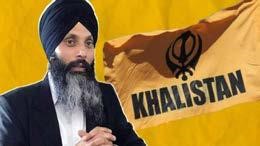 |
|
Avtar Singh Khanda
 |
 |
Paramjit Singh Panjwar
 |
|
| Harmeet Singh |
|
8.
Why is Canada’s PM Justin Trudeau supporting Khalistan extremism?
| Reasons | Analysis |
|---|---|
| The NDP alliance |
 |
| The 2025 Canadian elections |
|
9.
What is the Kanishka Air India bombing?
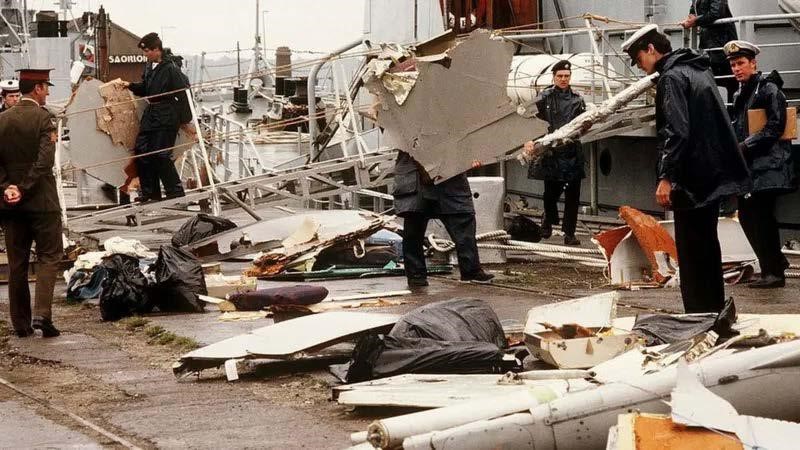
- On 23 June 1985, an Air India flight traveling from Canada to India via London, exploded off the Irish coast, killing all 329 people on board.
- Air India Boeing 747 was named after the Kushan dynasty emperor Kanishka.
- The cause was a bomb in a suitcase that was transferred to the flight even though the ticket holder had not boarded.
- The victims included 268 Canadian citizens, mostly of Indian origin, and 24 Indians.
- Canadian investigators have alleged that the bombings were planned by Sikh separatists who wanted to take revenge for the Indian army's deadly 1984 storming of the Golden Temple in Punjab state.
- A few months after the attack, the Royal Canadian Mounted Police (RCMP) arrested Talwinder Singh Parmar who was the leader of an extremist group called Babbar Khalsa that is now banned in Canada.
- Parmar was the founder, leader, and Jathedar of Babbar Khalsa International (BKI), better known as Babbar Khalsa, a Sikh militant group involved in the Khalistan movement.
- After the bombing, the Canadian government did not cooperate as Justin’s father Prime Minister Pierre Trudeau refused to extradite him to India on the specious plea that India.
- But the case against Parmar whom India had unsuccessfully tried to get extradited from Canada in the early 1980s was flimsy and he was released.
- In 2000, police arrested Ripudaman Singh Malik and Ajaib Singh Bagri on a number of charges including mass murder and conspiracy but in 2005, after an expensive trial that lasted almost two years, both men were acquitted of all charges
- Canadian authorities have been accused of not doing enough to prevent the attack and of bungling the investigation.
- The Canadian government set up a public inquiry in 2006, headed by a former Supreme Court judge, to look into the bombing.
- It concluded in 2010 that a "cascading series of errors" had led to the "largest mass murder in Canadian history".
- In 2010, after the inquiry report was released, then Canadian Prime Minister Stephen Harper offered a public apology to the families of the victims.
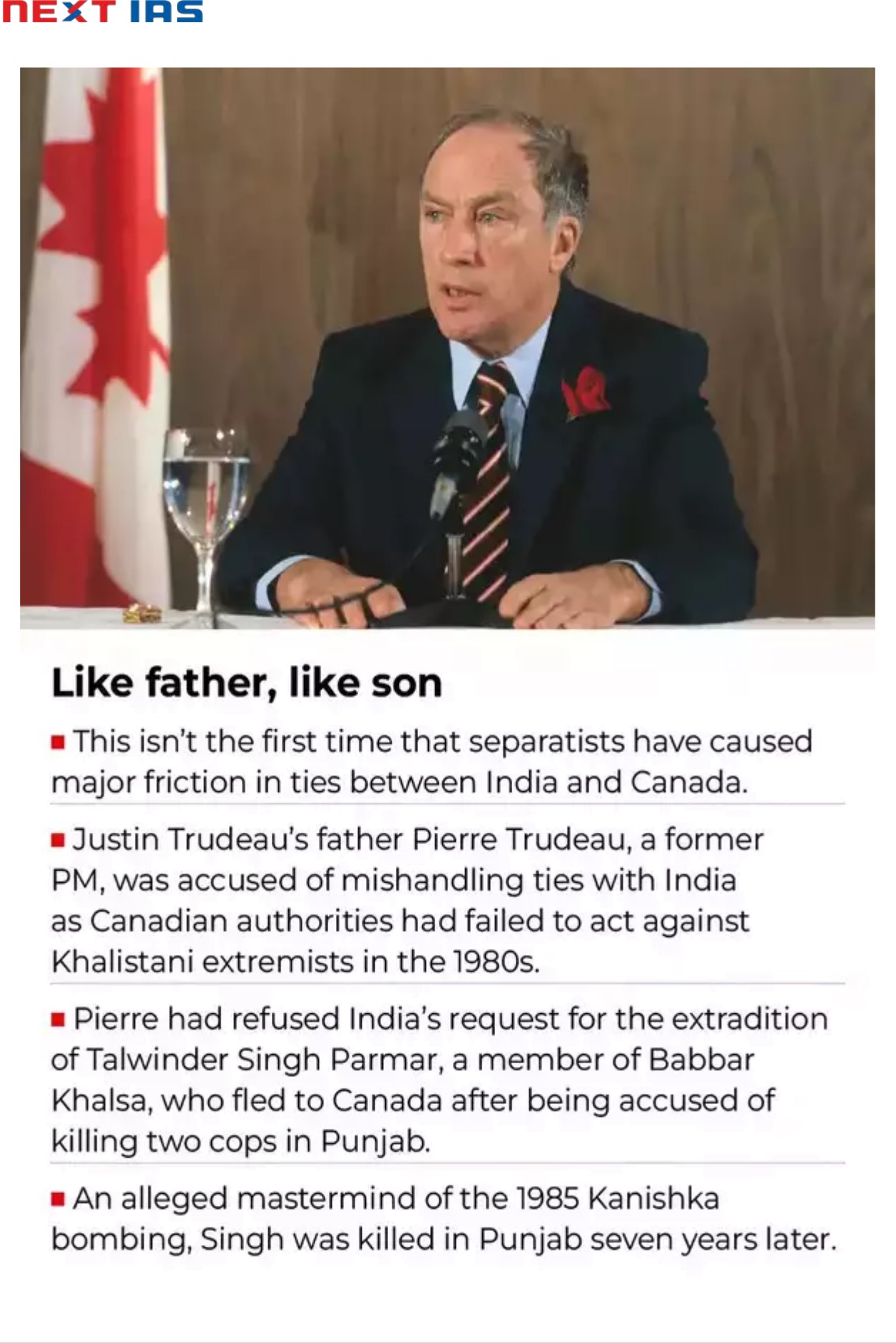
10.
How Canada became a hub for separatists?
- During the eighties and nineties when Sikh movement was at its peak in Indian Punjab, it needed funds, support and people who could formulate their strategy for them.
- Canada has the second largest Sikh population in the world after India, and hence ever since the Khalistan separatist movement started in Indian Punjab, Canada has been in the news
- Canada proved to be an ideal place which had a similar ratio of Sikh population as India and strong anti-Indian sentiments fueled by Pakistan ISI and separatists who ran away from India to seek shelter.
- An important factor for them to take shelter in Canada itself was that the Canadian laws were so weak that it was difficult to prosecute anyone who has committed a crime elsewhere.
- India was in political doldrums for over two decades and due to weak foreign policy, could not put a check on this.
11.
How has Canada become a haven for Punjabi gangsters?
- Since the 1980s, when a large number of Punjabis began to move to Canada, ethnic Punjabi gangs have become part of the Canadian landscape.
- Canadian soil has now become fertile land for gangsters and in recent years, their activity has increased significantly, paving the way for gang wars to break out.
- The strong presence of Khalistani leaders and terrorists in Canada help fund these gangsters and also enable their movement from India to the foreign land.
- It is reported that Sikhs for Justice, a pro-Khalistani group which is banned in India, is backing these gangsters.
- Additionally, the Canadian authorities, under the Justin Trudeau government, have taken little to no action against them.
- It’s also known that gangster Satinderjit Singh Brar, alias Goldy Brar, who is also a key accused in the murder of Sidhu Moose Wala, resides in Canada.
- In May, he was placed among the top 25 most wanted fugitives in Canada.
- Brar reached Canadian shores in 2017, is also accused of orchestrating the targeted killings of at least two more persons, attempt to murder, conspiracy to commit murder, and illegal arms trafficking in India.
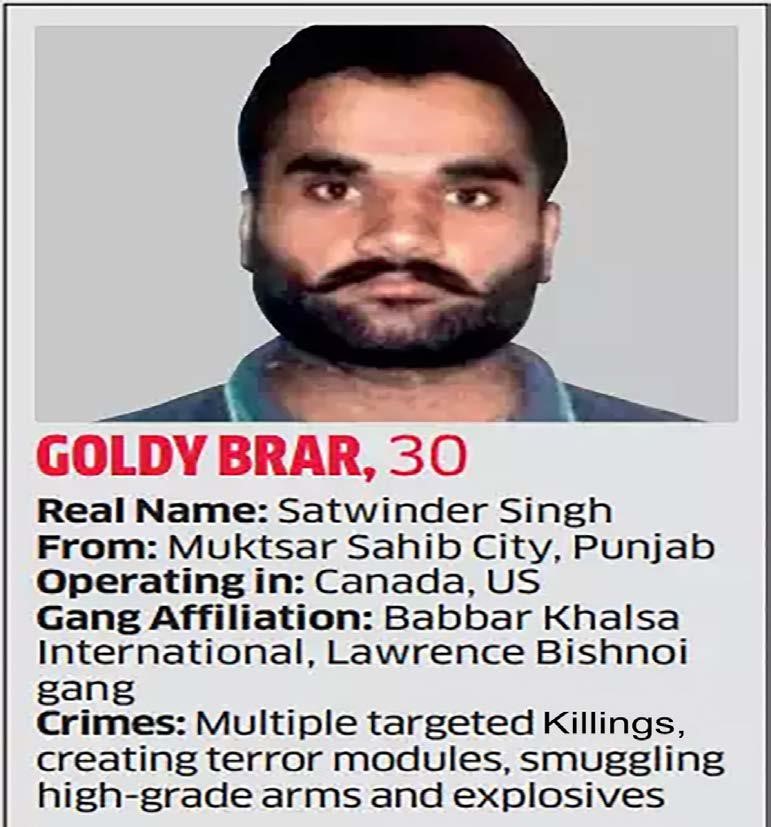
12.
What is the Five Eyes group?
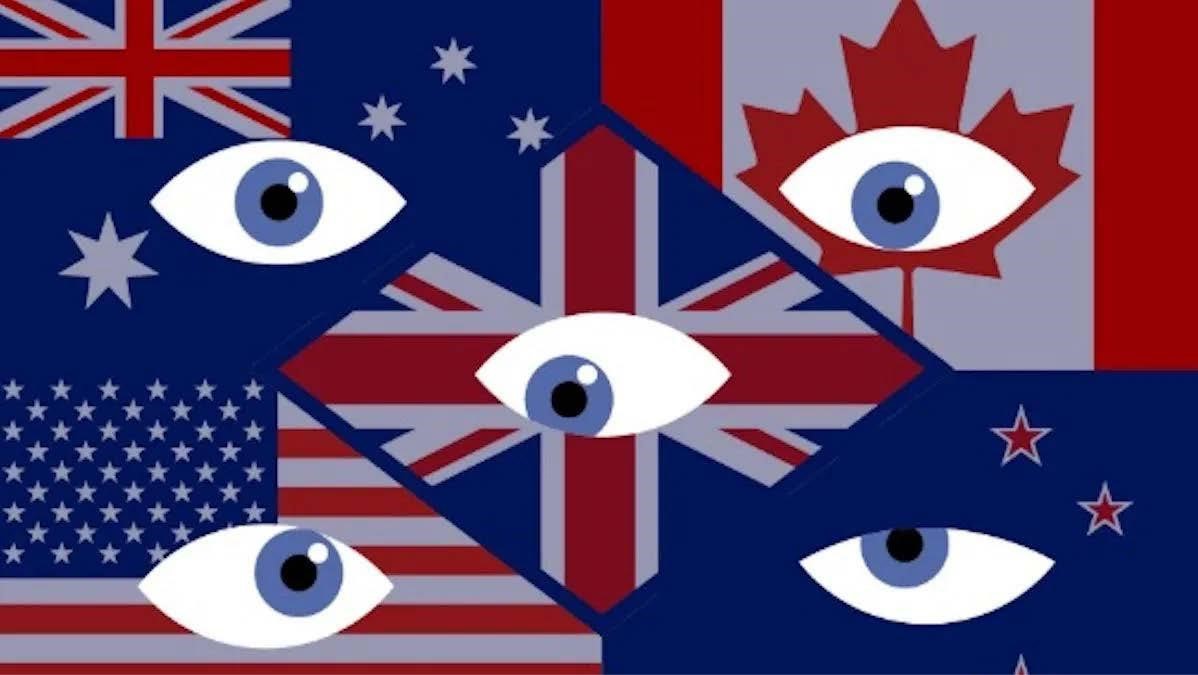
- The Five Eyes (FVEY) is an Anglosphere intelligence alliance comprising Australia, Canada, New Zealand, the United Kingdom, and the United States.
- Its genesis lies in the post-war 1946 UKUSA Agreement, intended as a cooperative arrangement for sharing signals intelligence (SIGINT).
- These nations collaboratively work on intelligence matters, pooling their resources and sharing sensitive information to ensure collective security and combat global threats.
- Beyond the core Five Eyes, there are also extended alliances known as the Nine Eyes and Fourteen Eyes.
- The Nine Eyes alliance includes the original Five Eyes countries along with countries Denmark, France, the Netherlands and Norway.
- The Fourteen Eyes further extends this group by also including Germany, Belgium, Italy, Spain and Sweden.
- These alliances enhance global surveillance capabilities, but also spark debates about privacy and the boundaries of national security.
13.
What could be the implications of an escalating India-Canada diplomatic row?
- The deepening acrimony in India-Canada bilateral ties could not only affect the bilateral relations but also harm India’s global reputation.

- The potential consequences of the escalating dispute are:
| Implications | Analysis |
|---|---|
| Impact on Economic Relations |
|
| Geopolitical implications |
|
| Impact on Students and Workers |
|
14.
What Should be the Way ahead?
| Way ahead | Analysis |
|---|---|
| Resolving Khalistani issue |
|
| Balancing the geopolitical interests |
|
| New Framework of Cooperation. |
|
| Strengthen the economic ties |
|
What is the relevance of the topic for UPSC CSE?
For Prelims: Comprehensive Economic Partnership Agreement (CEPA), Commonwealth, G20, Space Collaborations.
For Mains: Bilateral Relations, India - Canada, Trade Pacts and Agreements, Multilateral Institutions, Security and Growth.
Some Previous Years Prelims Questions
Q1. In which one of the following groups are all the four countries members of G20?(2020)
(a) Argentina, Mexico, South Africa and Turkey
(b) Australia, Canada, Malaysia and New Zealand
(c) Brazil, Iran, Saudi Arabia and Vietnam
(d) Indonesia, Japan, Singapore and South Korea
Some Previous Years Mains Questions
Q1. ‘Indian diaspora has a decisive role to play in the politics and economy of America and European Countries’. Comment with examples. (UPSC CSE 2020)
Some Questions from This Year and Previous Years Interview Transcripts
Board Dinesh Dasa sir:
- Tell us about India Canada relations.
- What is the Khalistan issue?
- What is Canada's stance on khalistan?
Board Lt Gen. Raj Shukla sir:
- Were India Canada relations sour even before the Nijjar issue?
- How did amritpal singh get so much following in such short period of time
Board Dinesh Dasa sir:
- India-Canada and India-US issue with regards to allegations on India.
- Few follow up questions.
Board Sheel Vardhan sir:
- Tell me something about the Nijjar issue and Canada's role in it?
- Why US has double Standard
- Why US has double Standard
- Does Canada have all party support?
- How can we improve the Canada-India relation?
Board Lt Gen. Raj Shukla sir:
- You are a student of PSIR, tell me about the deteriorating IndoCanada relationship
- There was an assassination too, what about that?
- What is your long term view on the Indo Canada relationship?
Board TCA Anant sir:
- What can Indian education systems learn from your university in Canada?
- What are the contributions of Indians in Canada?
- Is there a regional variation among the Indian diaspora there?
Some Questions for QUIZ
Q1. Consider the following Countries:
1. USA
2. Canada
3. France
4. UK
5. Australia
How many of the above countries are part of the Five Eyes group?
(a) Only two
(b) Only three
(c) Only four
(d) All five
Some Questions for POLL
Q1. Do you think that India has given a strong response to Canada’s allegation?
(a) YES
(b) NO
(c) Can’t say
Q2. Should India end all diplomatic relations with Canada?
(a) YES
(b) NO
(c) Can’t say